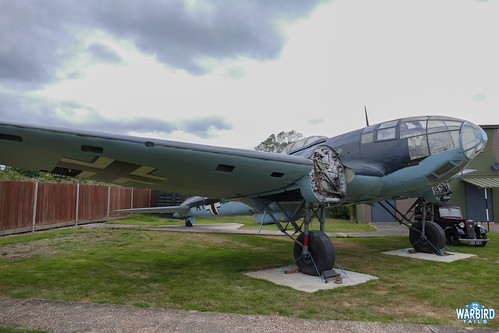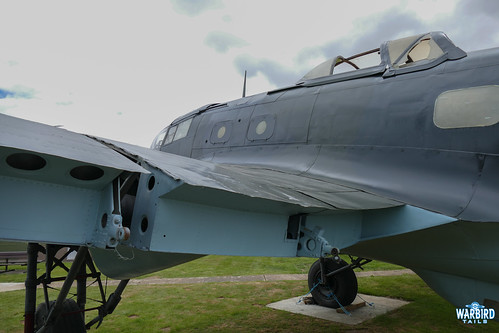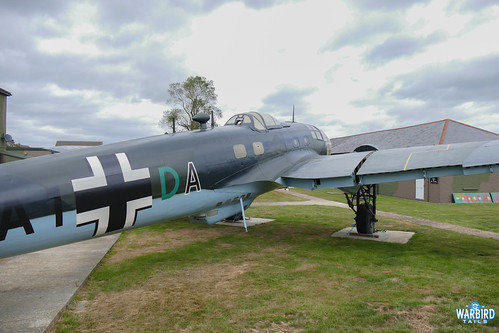As the lockdown restrictions are slowly lifted across England, this coming weekend will see a number of aviation museums open for the first time since lockdown, in many cases the first time in 2020.
One such museum is the Kent Battle of Britain Museum at Hawkinge. The museum has been featured on this page a few times over the last few years, charting the progress of their Bristol Blenheim project, together with the initial arrival of the CASA 2.111/He 111 at the museum back in March, just days before lockdown.
With detailed plans for the museum chairman Dave Brocklehurst and the other museum volunteers to tackle the mammoth task of stripping the Heinkel’s Spanish colours back to bare metal before repainting and finishing the machine in Lufwaffe colours. Dave, who lives on site, suddenly found himself as a restoration team of one and with hopes of the museums traditional opening around Easter now dashed.
Throughout lockdown Dave has continued the much appreciated daily updates from the museum and specifically the Heinkel, for many days the only good news going around on social media!
I’d been planning to come down and visit Dave and the team just as lockdown came into force so with restrictions lifting around meeting with others outside, I was able to get a date in the diary to come and see Dave and the Heinkel for myself.
The paintscheme was painstakingly researched ahead of the airframes arrival and luckily Dave made one last stop before lockdown to the paint shop to make sure they had the specially mixed paints on site when the time came. The finished airframe will be painted as a formation leader which features striking pink stripes on the rudder.
It is worth mentioning that just a week or so before my visit Dave had a dramatic fall from the top of the scaffolding that had been surrounding the fuselage of the aircraft while the painting was completed. Thankfully Dave was back on site within a day of the accident and I want to take this opportunity to once again wish him well, as I’m sure we all do!
The scaffolding that had surrounded the Heinkel for some months had been removed a few days before my visit, which meant that as I walked on to the museum sight I was greeted by that unmistakable glass nose and the sheer size of an He 111 managed to make the Blenheim (which seemed a big presence last time I visited) tiny by comparison. It is hard to believe this is the same machine that lay dormant and dismantled in the hangars at Duxford for the last 20 years or so.
Dave’s hard work during lockdown laid a great foundation for more of the volunteers joining him as restrictions eased and work was able to pick up speed. At the time of my visit preparations were in place to install the control surfaces which are now not only installed but also in working order! An impressive feat.
Dave was kind enough to offer me a chance to get on board and take a look at the interior of the Heinkel. I must stress that social distancing was followed at all times, with Dave highlighting the key points from outside the aircraft. The interior looks as you might expect for an aeroplane that has laid untouched for decades but was generally in better condition than I expected. A careful walk across the bomb bay leads to the cockpit where you get a great sense of the exposed position of the crew in that all glass nose.
I’m sure any advantage of visibility was quickly diminished by the feeling of hanging in mid air the glazing provides. Another imrepsisve restoration is that the bomb bay doors are now in full working order, as I can attest having operated them myself on the day. They are certainly hard work!
This aircraft is certainly an impressive projects and probably one of the most impressive undertakings by a UK museum in recent memory. It really goes to show what can be achieved with the passion and drive that Dave and his team have to tell the story of the Battle of Britain from both sides. With the addition the Heinkel together with the Blenheim and Defiant in recent years, an already great museum is quickly amassing a unique collection of airframes that could not be found outside of the national collection (and even then no longer on one site with the Defiant moving to Cosford in 2018).
The museum at Hawkinge is now all set to re-open with social distancing in place from Saturday 4th July so the public can finally witness the incredible fruits of the teams hard work. This project is a great testament to the whole team, but especially for Dave and his hard, solo work throughout lockdown.
Please support the museum now they are able to re-open and get down there to enjoy the greatest collection of Battle of Britain artefacts and a wonderful selection of aeroplanes.











Ive watched the dedication and effort you chaps have put into this project and congratulate you all on a magificent result
LikeLike
The openly exposed cockpit of this plane seems like it was an easy target during the war. Do you know how many of these planes were shot down during those years?
LikeLike